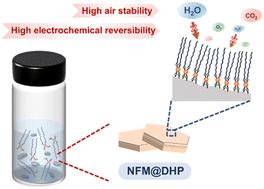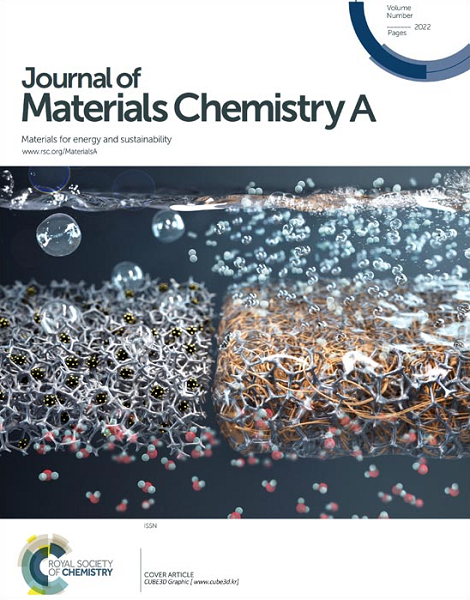Self-assembled monolayer boosts the air-stability and electrochemical reversibility of O3-type layered oxides for sodium-ion batteries
IF 10.7
2区 材料科学
Q1 CHEMISTRY, PHYSICAL
引用次数: 0
Abstract
O3-NaNi0.33Fe0.33Mn0.33O2 (NFM) is a promising cathode material for sodium ion batteries (SIBs), yet its instability in ambient air and transition metal dissolution during cycling hinder its practical applications. In this study, we introduce a self-assembled layer of C32H67O4P (DHP) to boost the air-stability and electrochemical reversibility of NFM. The DHP can form robust chemical bonds with the surface hydroxyl group of NFM, yielding a thin (∼6 nm), robust, and hydrophobic coating layer that effectively protects the electrode from air degradation and transition metal dissolution. Consequently, the DHP-coated NFM (NFM@DHP) cathode exhibits a capacity retention of 87.3% after 330 cycles at 1C, far surpassing the unmodified sample's retention of 54.5%. Furthermore, after 7 days exposure to humid air (30 °C, 50% relative humidity), NFM@DHP maintains a specific capacity of 118 mA h g−1 at 0.1C, whereas the capacity of unmodified NFM decreases to 49 mA h g−1. Our work offers a novel approach for developing stable layered oxide cathodes for practical applications in SIBs.

自组装单层提高了钠离子电池中 O3 型层状氧化物的空气稳定性和电化学可逆性
本文章由计算机程序翻译,如有差异,请以英文原文为准。
求助全文
约1分钟内获得全文
求助全文
来源期刊

Journal of Materials Chemistry A
CHEMISTRY, PHYSICAL-ENERGY & FUELS
CiteScore
19.50
自引率
5.00%
发文量
1892
审稿时长
1.5 months
期刊介绍:
The Journal of Materials Chemistry A, B & C covers a wide range of high-quality studies in the field of materials chemistry, with each section focusing on specific applications of the materials studied. Journal of Materials Chemistry A emphasizes applications in energy and sustainability, including topics such as artificial photosynthesis, batteries, and fuel cells. Journal of Materials Chemistry B focuses on applications in biology and medicine, while Journal of Materials Chemistry C covers applications in optical, magnetic, and electronic devices. Example topic areas within the scope of Journal of Materials Chemistry A include catalysis, green/sustainable materials, sensors, and water treatment, among others.
 求助内容:
求助内容: 应助结果提醒方式:
应助结果提醒方式:


